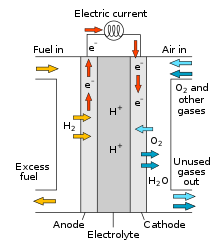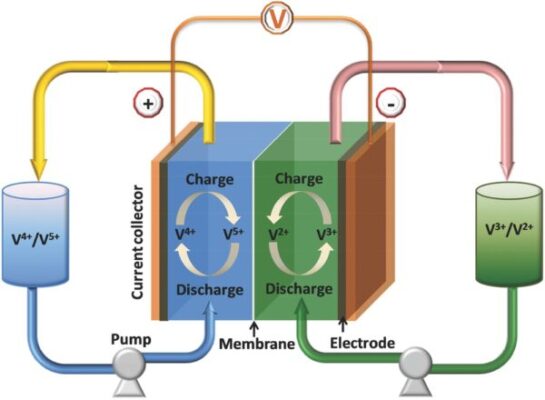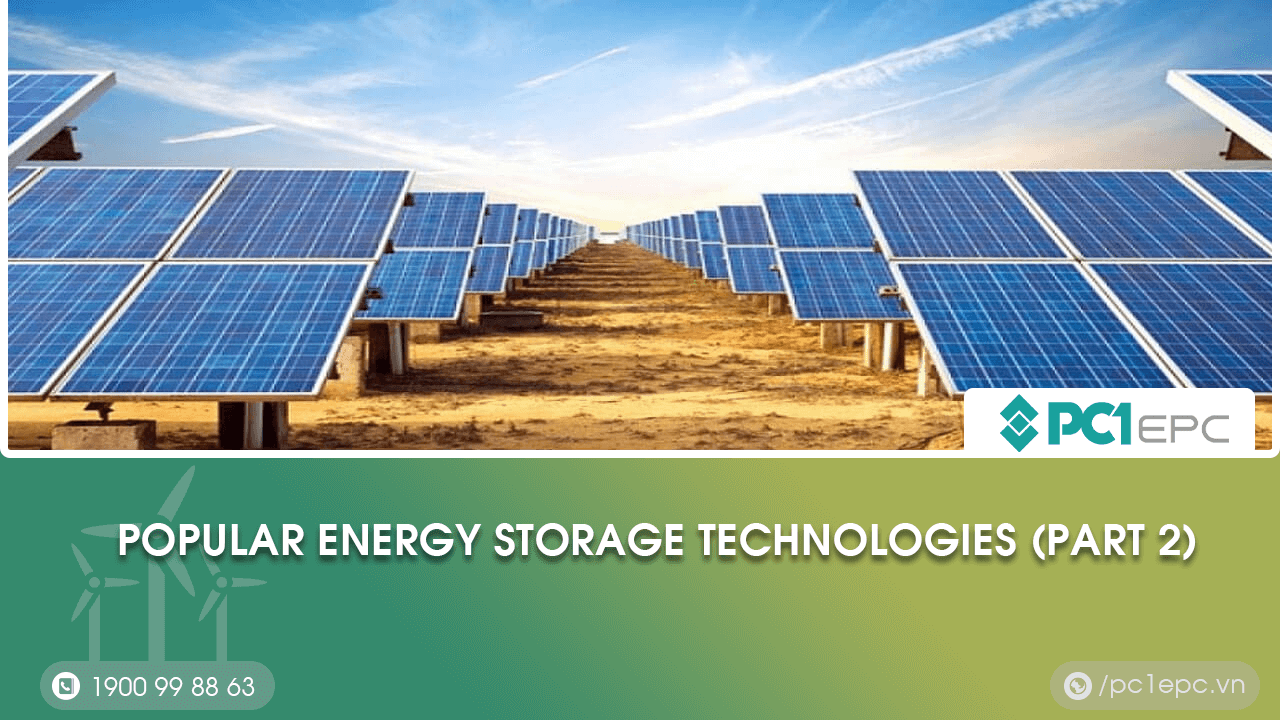In part one, we learned about energy storage methods such as Pumped-storage hydroelectricity, Flywheel energy storage system, Lithium-ion Batteries, Solid State Batteries. In this section, learn more about other efficient energy storage methods, including hydrogen fuel cells, lead-acid batteries, and redox flow batteries.
Hydrogen fuel cell

Fuel cells offer enormous potential for today’s human energy storage. The operation is based on the same energy conversion process as in conventional batteries with two electrodes separated by electrolysis. However, fuel cells have many advantages over using Hydrogen, one of the most common chemical elements on Earth, abundantly and continuously. In addition to powering cars, they are also used to power NASA buildings and satellites.
Unlike batteries or accumulators, hydrogen fuel cells do not lose power nor are they capable of being charged. They operate continuously when fuel (hydrogen) and oxidant (oxygen) are brought in from outside. Since then, the Hydrogen fuel cell has had a higher efficiency because it produces electricity continuously, without having to undergo the process of charging and discharging to reuse like conventional batteries. So theoretically, this is the type of battery that can run as long as there is fuel left.
In principle, hydrogen needs to be supplied on a regular basis for it to continue to generate electricity – this has led to the proliferation of refueling stations where hydrogen-powered vehicles can be “filled” with hydrogen as the battery drains. has been exhausted.
Lead acid battery

It can be said that, although it was invented in 1859, the lead acid battery still has wide application now. After decades of development, acid batteries are now relatively cheap to manufacture and have become one of the top choices in cars. This is because they have the extremely high conductivity of the battery’s anode material, lead oxide, which provides the spikes in currents needed to start the car.
Lead acid batteries are also developed to store renewable energy today, especially solar power. If you’re concerned about the technology’s use of harmful chemicals, plus the short battery life, there are great advances in recycling programs for these batteries, which are highly efficient.
Advances in technology and people have made it possible to create lighter batteries, charge faster, and store more energy. But the lead-acid battery model still has a place thanks to its low cost because they are currently mainly used for small-scale electricity storage.
Redox Flow Battery

This type of battery uses an electrolyte liquid and is often used for large-scale energy storage systems. Recently, researchers have created a Redox Flow battery that can last for 10 years while reducing battery life degradation to a very low level. This is an ideal battery for solar or wind energy storage purposes.
The advantages of Redox Flow batteries are their compactness, higher efficiency, and lower production costs than many other battery technologies available today. However, they are still in the research stage and need some more time to be ready for the market.
See more at:


